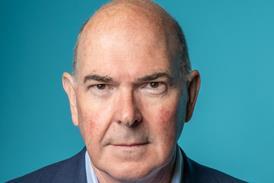Amazing ideas ran freely through one trust but it did not know how to make them a reality until it embedded innovation as a core value, explains Tony Bell.
Get involved
Do you have an innovation case study you would like to see featured in Resource Centre? Let us know by emailing hsjresourcecentre@emap.com with the subject line “Liverpool”.
The Department of Health report Innovation, Health and Wealth makes a number of key recommendations, including the call for “boards and chief executives to be made accountable for their contribution to innovation”.
Clinicians and non-clinical managers at Royal Liverpool and Broadgreen University Hospitals Trust have invested in a corporate approach to innovation over the past two years which is now beginning to bear fruit.
Generating good ideas, testing them out, spreading their application and encouraging early adoption is something that must be seen as part of the day job for leaders in the organisation.
In 2010 the trust board reviewed its strategic direction, with one of the outcomes being to embed innovation as a core organisational value. The next year was spent making the connections across the trust to establish a dialogue in innovation.
The organisational development programme had already laid the foundations of getting everyone involved in continuous improvement and was now realising that there was no shortage of good ideas, just a lack of understanding as to where to take them.
We began with appointing a senior manager with a biomedical engineering background to develop the focus for innovation and in 2011 added to this with a senior clinician appointed in the part time role of associate director for innovation. Together they formed an innovation working group and we ran the first Dragons’ Den-type events. Staff were invited to pitch their idea to a panel and four projects were selected for funding for one year to develop their idea to its next stage. These included an online portal for inflammatory bowel disease, an electronic dosing calculator and a simple splint/brace measuring device for electronic ordering.
We began to map the groups focused on improvement and the infrastructures contributing to these. We embedded our innovation team within our research and development department and made it the research, development and innovation department. This gave it focus and visibility in the organisation and allowed us to capitalise on our external industry collaborations without duplicating effort.
Celebrating success
We introduced the online portal “ideas street” for staff to post theirs and get help from the team. We established an intellectual property audit across the organisation through a local independent bio-sciences company to help us further identify hotspots in the organisation and surface connections we may be unaware of at a corporate level.
Last December we organised a seminar, called Excellence at the Royal, and invited contributions from across the national and local innovation scene, including small and medium enterprises, the local research network and key collaborators from IT, bio-sciences and Merseyside and Cheshire Health Innovation and Education Cluster. All of this provided tremendous networking opportunities and gave us the space and time to celebrate success, make recognition awards to teams and promote new collaborations.
What have we learnt so far? The reality is it will be messy wherever you start but the most important thing is just to start. Once we had assembled a core group of people whom we felt had a skill set that could contribute to this drive, we could begin to set out our direction of travel.
The Innovation, Health and Wealth review, led by Sir Ian Carruthers, took evidence from 160 organisations and 320 people. Their summary diagram of the barriers to innovation in the NHS is a good audit tool for helping assess an organisation’s position on innovation in the key areas.
When we mapped this against the approach taken at the Royal Liverpool we have found a high degree of correlation to the activities and priorities we have been engaged with (see charts, attached PDF).
People who innovate and transfer knowledge into practice are those going the extra mile and deserve some credit. Quite often we have found that these are not people with a high profile within the trust - quite the reverse is the case. Recognition in some form such as an award not only helps sustain motivation but also sends a clear message to others and makes it an achievable ambition for them.
It’s equally important for us to look to our higher education institution partners and look beyond the obvious medical and health faculties into their wider research and education programmes. We have been amazed by some of the ground-breaking research and innovation happening across our university sector. Bringing previously unrelated topics together with people who are passionate about their subject has a real synergistic value to both organisations.
Our trust board and particularly our non-executive directors bring a rich variety of business and life experience, which has proved invaluable in helping us think more broadly. It has also led to the possibility of us using our charitable endowments committee as part of the ideas street evaluation and the use of non-recurrent resource for seed funding to develop concepts and encourage adoption and spread of ideas.
We are only at the beginning of this journey and we can already see significant opportunities for innovation. We are also seeing the human capital value of engaging staff in this programme and the positive influence it has on our culture and practice.
Tony Bell is chief executive of the Royal Liverpool and Broadgreen University Hospitals Trust.























No comments yet